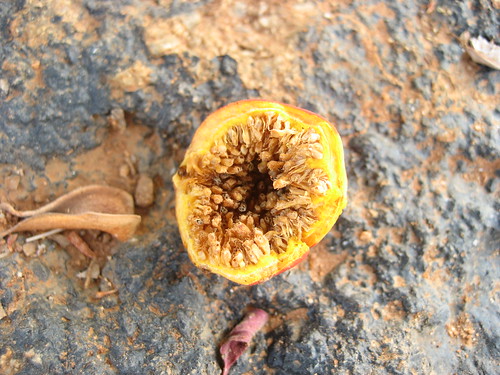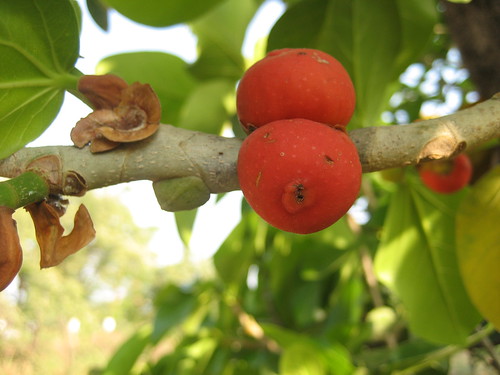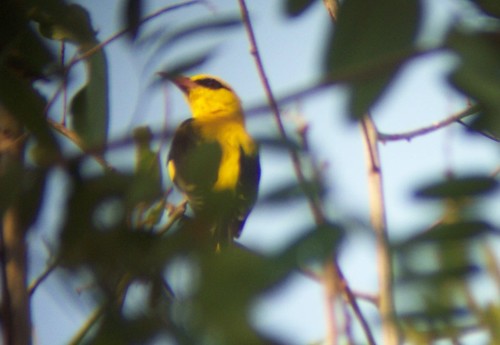Banyan trees don't have flowers in the conventional sense. The Ficus species bear figs but the flowers are inside the fruit! This phenomenon is due to an amazing interaction between the tree and a special kind of wasp called the fig wasp.

When we eat a fig, we're actually eating the flowers inside the 'container' that is the fig. The flowers are of three kinds- male, female and a third kind which is the gall flower. The fig wasp, which is responsible for pollinating the flowers is born inside the fig. Male and female fig wasps also mate inside the fig, but only the winged female flies out of her cradle after mating (the male has a minor role to play in the drama!).

She flies to a different ficus tree that is bearing figs and enters a new fig to lay her eggs in the special gall-flowers. While doing so, she brushes against the female flowers and pollen is deposited on them. The flowers get pollinated and the figs can now take seed.
It's quite a story... the mighty fig depends on a tiny wasp for its entire reproductive cycle. The wasp is also choosy- each kind of ficus has its own species of wasp and it can only lay its eggs inside its figs.
Our campus has only two banyan trees that I know of- one near the Main building and the other behind A-block. Incidentally, banyan trees are also one of the best places to watch all kinds of birds because they love feasting on its fruits. One of the most beautiful of these is the Golden Oriole. It's a very shy bird with a red bill and a golden yellow plumage. I have always seen it around these Banyan trees on campus. Here is a photo, but not a very good one:

I hope people start noticing trees around campus, there are many interesting things to be seen. I have quite a few photographs that I took around April this year. Perhaps I should start a tree series on this blog as it has been idle for quite a while!
No comments:
Post a Comment